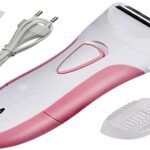
Different types of braces at Omaha Orthodontics
Different types of dental braces might be suggested to straighten out your teeth. In order to choose the appropriate course of therapy for certain patients, weighing the pros and cons of each type is necessary. Omaha is a well-known location for receiving dental care. The Omaha orthodontist has a wealth of expertise and experience in dental care. As a result, if you go there, you will get the right solution when you need clarification about which braces therapy is best for you. Stay here to learn about the different types of braces at Omaha Orthodontics:
Lingual Braces
Lingual braces are similar to traditional braces in that they are made of metal, but they are attached to the inside of the teeth as opposed to the outside, making them invisible. The obvious benefit of this type is that it hides behind the teeth, making it invisible to others. They often take longer to straighten teeth as desired and are less effective than traditional braces. They could also annoy the patient because they are so close to the tongue. Finally, they are more challenging to clean. Getting lingual braces from an Omaha orthodontist is preferable.
Metal braces
When you think of braces, you may imagine conventional metal braces. Using bands, brackets, and wires made of stainless steel over time, metal braces gently reposition your teeth. A dentist or orthodontist places a thin, flexible arch wire over the brackets. Ligatures, and tiny elastic bands, keep the wire firmly in place. When you smile, your metal braces are apparent. To hide your braces, use clear or tooth-coloured ligatures. Alternatively, you can select ligatures in vibrant colours if you are in a festive mood.
Ceramic braces
Ceramic braces are transparent, tooth-coloured appliances. They perform a similar function to metal braces, however they are more discrete and undetectable. Patients who don’t think Invisalign or lingual braces are the best option but still want to straighten their teeth discreetly and economically are most likely to choose ceramic braces. Most of these patients are adolescents who are primarily motivated by aesthetics.
Ceramic braces are a more discrete and cost-effective option to metal braces than the latter. You should be aware, nevertheless, that these braces are also a little bigger than metal braces and can stain based on food and brushing practices. They are not for everyone, but they are still an essential tool in your toolkit for orthodontics.
Invisalign
The most distinctive kind of braces is called Invisalign since they don’t use brackets and wires and instead employ a series of individually created translucent plastic aligners worn over the teeth. Every two weeks, throughout treatment, these aligners can be easily taken out and replaced with the subsequent one in the series. To achieve the desired results, most people require anywhere from 18 to 30 different aligners. Many patients find that this style of braces is preferred because they are practically unnoticeable and provide them more flexibility to eat and drink anything they want. Due to their excessive price tag, they can only treat modest to severe dental issues in teenagers and adults.
Bottom line
Finally, the above mentioned are about the different types of braces at Omaha Orthodontics. People with dental problems are advised to have braces and the type of braces recommended depends on the condition of the patient’s teeth.






